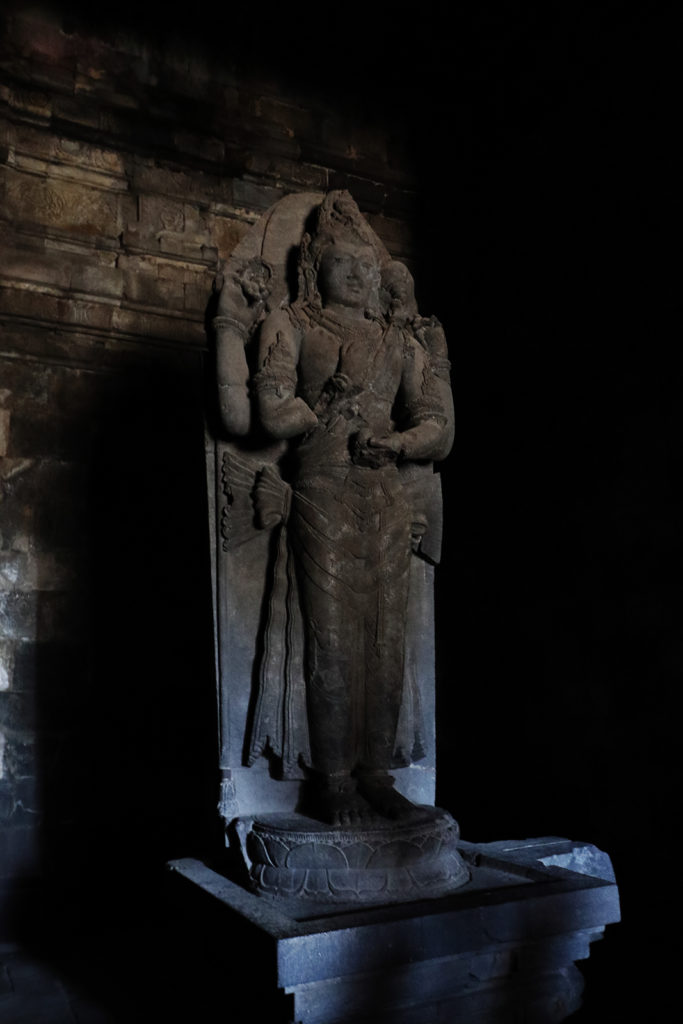Indonesia – Part 4: Prambanan
My third stop of the Jogjakarta trip was Prambanan, a Hindu temple dedicated to the Trimurti. Believed to be built in the 8th century during the time of the Mataram kingdom, it is also the largest Siva temple in Indonesia.
Prambanan is located right next to the Solo-Jogjakarta highway. If you are travelling from Jogjakarta, it is only about 7.5km away from the airport. I realised a little too late that I have to pay yet another 350,000 IDR as an entrance to Prambanan Temple. However had my tour organiser been more considerate, I could’ve done both Borobudur and Prambanan for a combined ticket price of 560k. As it stood, I paid a total of 725k for both sites, an additional 165k or roughly 11USD more. The tickets can be bought at the site but the tour operators usually have pre-bought tickets which they sell pretty much at the same price.
History of Prambanan unlike Borobudur, seems to be quite well documented. According to the historians, it was first built around 850 CE and was then expanded. While the complex houses temples for all three gods, Brahma, Vishnu and Shiva, the original seem to have been dedicated to Shiva and was called Sivagrha/Sivagriha, meaning “House of Shiva”. A stone inscription now known as the Sivagrha Inscription states that the when the temple complex was completed, the course of the river that flowed near the temple was changed. Historians suggest that the river may have flown too close to the temple complex that it may have been dangerous to the integrity of the complex. I would however have thought that such evaluations should have happened earlier, but well…
Prambanan complex hosts 3 main temples with the largest being dedicated to Shiva and the other two being dedicated to Brahma and Vishnu. In front of the temples for each of the deities is also a temple for their Vahana (the mount). There are two temples on the North and South ends of the main complex which are called Apit temples, meaning ‘flank’ in Javanese. The Apit temples are currently empty. There are 224 temples outside the main complex that surround the whole of the complex.

The walking platforms of all three main temples of Prambanan are decorated with carvings depicting Ramayana and Bhagavat Purana 
A panel depicting a lesser known scene from Ramayana, Gagaksura Episode. 
Monkey army building a bridge to Lanka.
Similar to the Borobodur, the temples of Prambanan are adorned with stone carvings that depict various stories. Quite interestingly, all the panels are related to the Ramayana and Bhagavath Purana, two stories which depict Vishnu’s avatars. It is even more interesting that the story panels start in Shiva temple and run across the other two. In India and Sri Lanka, Shaivism and Vaishnavism are quite distinct and they would not have the other deity being depicted in their own temple. I guess in Indonesia it was more mixed and given that it was a temple for the Trimurti it makes more sense.
As usual of these places, there were more people at the main temples where everyone assumes the attraction is. While the main temples and the main enclaves are important from a religious point of view, there is so much more to see around the temples. If you are planning to visit Prambanan, I would seriously implore you to take a walk around the temple, both on the platform around the temples at a midway height, as well as on the ground. You will note that the outer sides of the temple are also adorned with many decorated panels that are seemingly repetitive, but each animal or tree being slightly different to others.
One of the myths with regards to Prambanan seems to involve a beautiful princess named Rara Jonggrang. The myth says that a prince who slew her father in combat came to see her and was love-struck and proposed her to be his queen. The princess quite understandably refused his hand but set up a challenge, if he can build a thousand temples in one night, she would marry her. The prince, who is named Bandung Bondowoso, uses his supernatural powers to conjure up demons and goes to build the thousand temples. The princess watches the progress overnight and realises that the prince may well be able to finish his work before the sunrise. As he finishes the 999th temple, she instructs her maids to light massive fires and start pounding rice. The sound of the rice pounding, an activity that is generally done at the day start and the light of the fires made the demons think that the Sun is about to rise and they all flee. Prince Bandung Bundowoso learns of the deceit and curses the princess turning her into a temple. In some versions, she is turned into a statue in the main temple. The belief goes on to state that the nearby Sewu Temple site hosts the rest of the temples. However in reality Sewu is a Buddhist temple that predates the Shivagriha complex by about 70 years. Ironically Sewu means “thousand” in Javanese, a nod to the myth of Rara Jonggrang.
Once you walk out of the Prambanan temple, you can also visit Candi Lumbung, Candi Bubrah and Candi Sewu. All three of them happen to be Buddhist temples and it does not seem that there I could not find much details about them. Even the names of the sites seem to reflect very informal; Candi Lumbung means rice-barn temple, Candi Bubrah means the worn-down temple and Candi Sewu means the thousand temples. I hope that they manage to find the details of the amazing social and religious dynamics of Java’s history.



